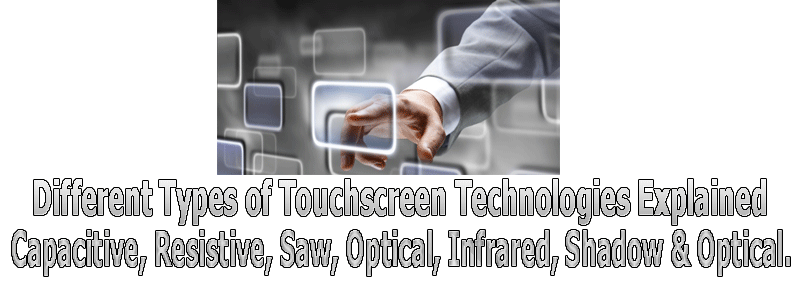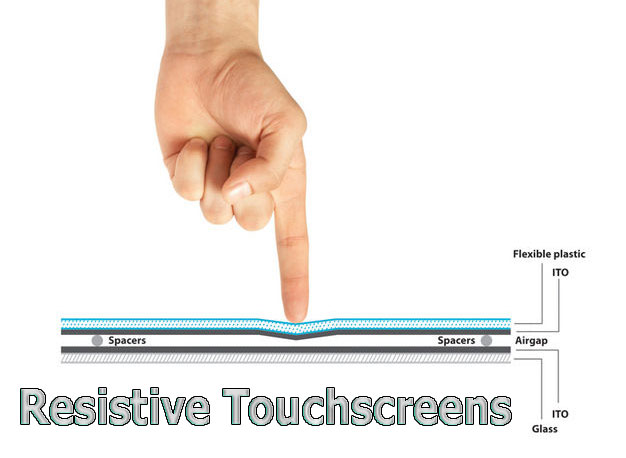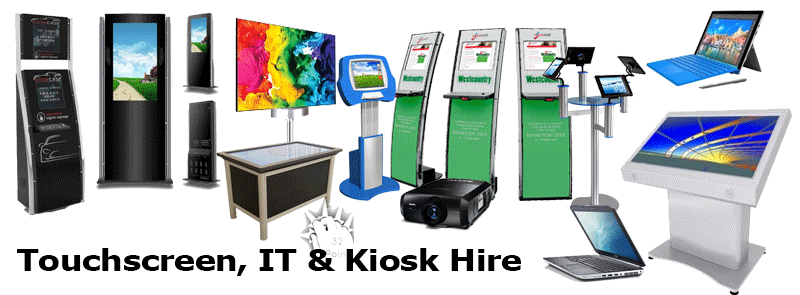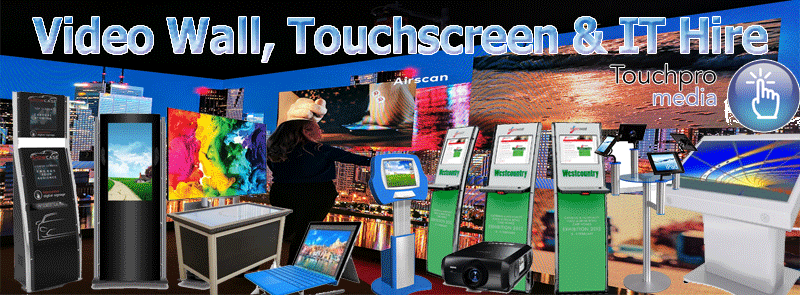
Different Types of Touchscreen Technologies : Resistive Explained
| Call Us | Email Us | Website |
All touchscreens are not the same.
They achieve the same thing; you place your finger or stylus on the screen and your finger or stylus acts like a cursor or mouse pointer, but there are several different types and they achieve this by using different builds and technologies. There are also pros / cons – advantages and disadvantages to each type.
The four most widely used touchscreen technologies are:
- Capacitive Touchscreens
- SAW (surface acoustic wave)
- Resistive
- Infrared
Resistive and Capacitive touchscreens are most widely used in industrial settings. They are sturdy, reliable and economic.
Resistive (Sometimes referred to as 5-wire Resistive Touchscreens) touchscreens are made of a number of different layers. These layers have spaces between them. This is achieved by having small supports like mini columns holding up the layer above and keeping it from naturally touching the layer below.The most important layers are the electrically resistive layers. The front panel is malleable / flexible and when touched slightly indents with the pressure applied to it. This then gets pushed between the mini supports enough to make contact with the second layer below. This is made of glass or plastic and is not flexible and an electrical current is then sent up and down on one panel and left and right on the other. A computer than uses these co-ordinates to know where your finger has been placed on the screen.

resistive-touchscreen-hire-explained
This is a very simplified explanation of how Resistive touchscreens work but hopefully explains the basic principle.
Pros / Advantages of Resistive Touchscreens and why you may choose one
- Very good at recognising handwriting
- Can be used with anything that can apply pressure (finger / stylus)
- The flexible first layer is tough and durable
- reasonable resistance to dust and water
- Relatively Cheap to produce.
Cons / Disadvantages of Resistive Touchscreens and why you not may choose one
- They rely on pressure being applied. So they are not very sensitive.
- The clarity of the image can be slightly damaged by the additional layer above the bottom layer where the image is held.
- These do not support multi-touch.
To read more on other types of touchscreens use the links below:
SAW Touchscreens Explained
Capacitive Touchscreens Explained
Infra Red Touchscreens Explained
Resistive Touchscreens Explained

Interested in hiring with us? Contact details below:

